Shorebirds, as their name suggests, are most commonly seen by the shores of oceans, lakes and wetlands. During migration, they are often feeding in large groups on coastal mudflats or flying in flocks of thousands above the sea. If you are lucky enough to follow some of them up to the Arctic, you will find various shorebird species breeding inland. Shorebirds form one of the most diverse groups of ground nesting birds in the tundra, with over 50 species nesting in the arctic regions of the world.
Shorebirds are a subject of management concern due to declining population trends observed in several species. Identifying factors driving arctic shorebird population dynamics is difficult as they undergo long-distance migration and spend time in widely separated breeding and non-breeding habitats. Habitat loss at migratory stopover and wintering sites is considered the main cause of population declines in shorebirds. However, we do not know much about the effect of changes occurring in the Arctic on shorebird populations. Ecological research focussing on non-harvested wildlife, such as shorebirds, is rare in the Arctic. By collecting detailed information on ecological and demographic parameters, our research is providing key data needed to understand processes affecting the abundance of arctic-nesting shorebirds.
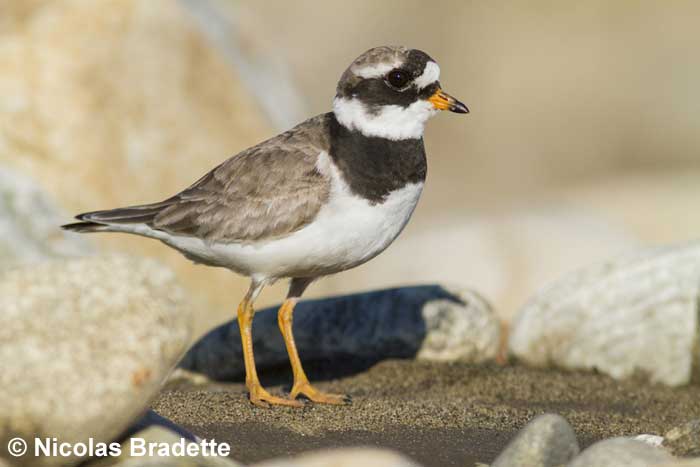 |
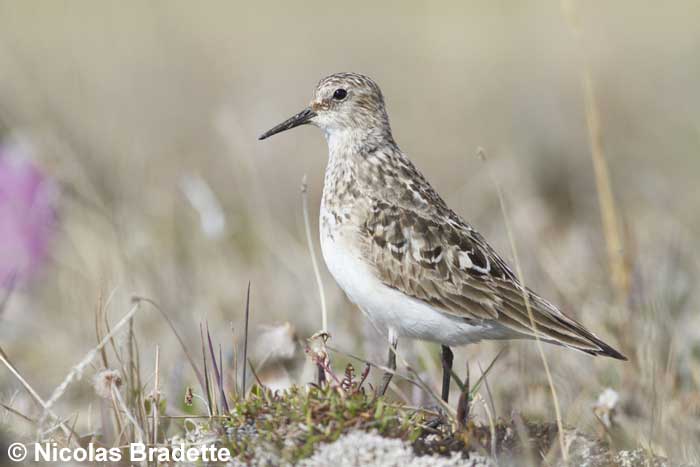 |
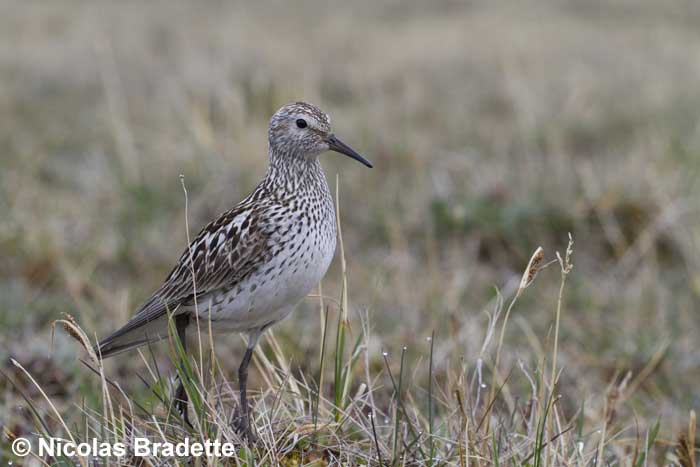 |
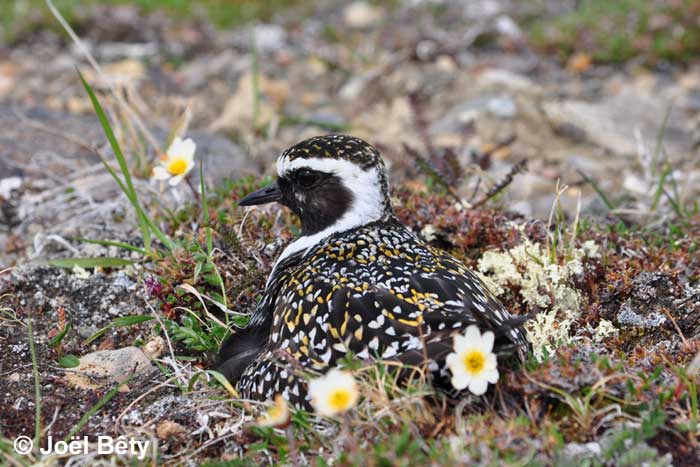 |
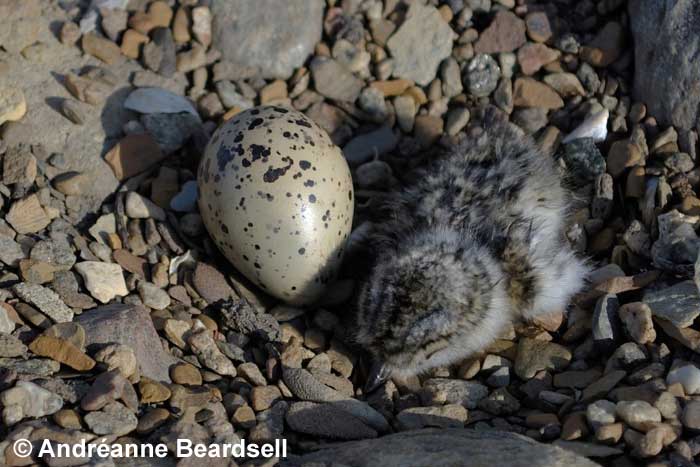 |
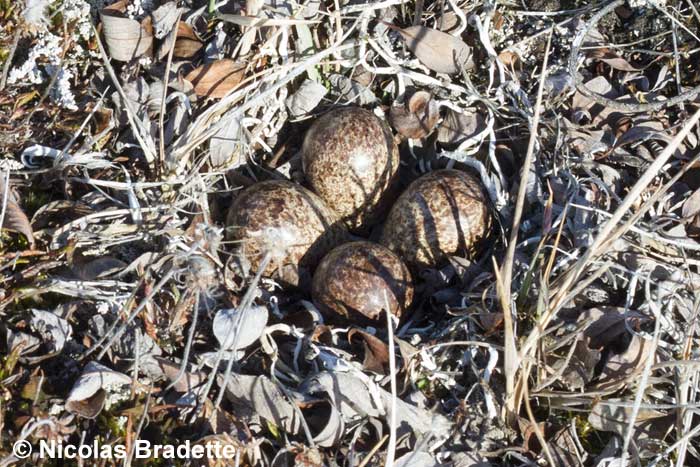 |
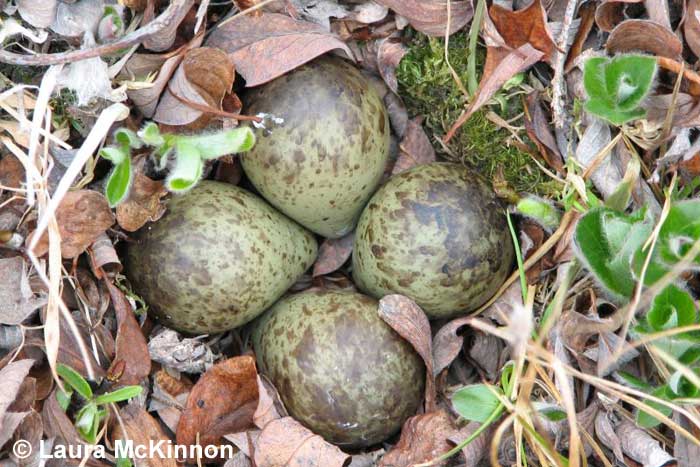 |
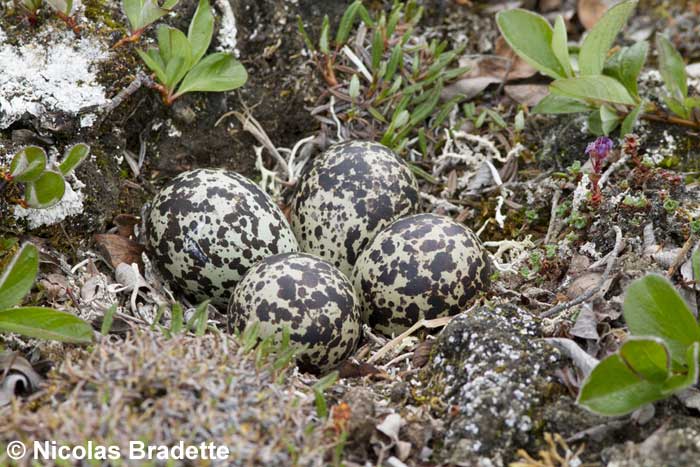 |
| Common ringed plover | Baird’s sandpiper | White-rumped sandpiper | American golden plover |
On Bylot Island, the most abundant nesting shorebirds are Baird’s sandpiper, white-rumped sandpiper, American golden plover and common ringed plover. Other shorebird species nesting on Bylot Island include black-bellied plover, pectoral sandpiper, red phalarope, red knot and ruddy turnstone. For a complete list of shorebirds observed on Bylot Island take a look at our bird species list.
The main objective of our project is to identify environmental and ecological factors affecting population dynamics and distribution of shorebirds nesting on Bylot Island. Our specific goals are to:
- Identify factors affecting reproductive success and survival of shorebirds.
- Provide baseline information to evaluate current and future population trends for shorebirds and their food (insects and spiders).
- Identify wintering origins and migratory routes of shorebirds breeding on Bylot Island.
Migration
Of all migrating organisms, shorebirds exhibit one of the most impressive migratory strategies. For example, both the white-rumped and Baird’s sandpipers cover an astounding 15,000 km from wintering areas at the southern tip of South America to their breeding grounds in the Canadian Arctic. Ecological barriers such as oceans, mountain ranges or glaciers can have a substantial influence on the evolution of shorebird migration routes and strategies. For instance, our results show that common ringed plover nesting on Bylot Island and wintering in Africa use different strategies during the spring and fall migration. They minimize continuous flight distances over the ocean in spring by making a detour to stop in Iceland. In autumn, however, most individuals cross the ocean in one direct flight from Southern Greenland to Western Europe, as far as Southern Spain. This likely results from prevailing anti-clockwise winds associated with the Icelandic low-pressure system.
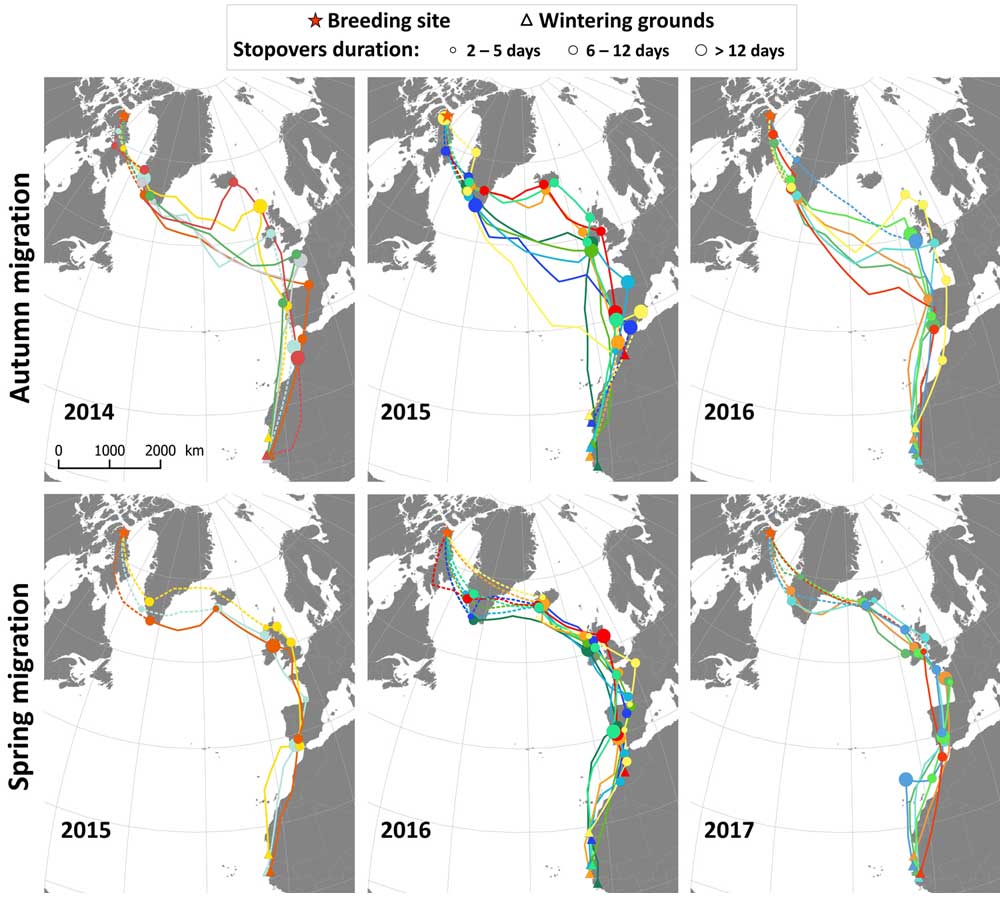
|
| Migration routes of common ringed plover nesting on Bylot Island and wintering in Africa (from Léandri-Breton et al. 2019, DOI 10.1111/jav.02101) |
Breeding ecology
On Bylot Island, our data indicates that the arctic fox is the main predator of shorebird nests. Shorebird eggs are an accidental prey for the arctic fox, as they primarily feed on small mammal and goose eggs on Bylot Island. Predation on shorebird eggs is higher when the abundance of lemmings is low. Alternately, when lemmings are abundant, shorebirds experience reduced predation pressure and have higher nesting success.
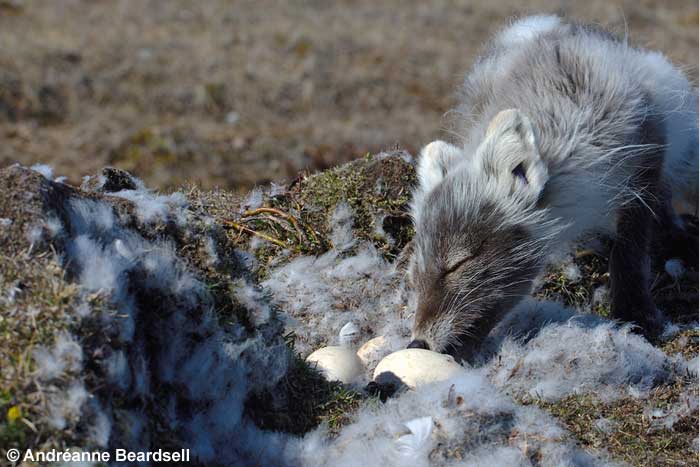
Our research also show that goose abundance negatively affects arctic-nesting shorebirds through shared predators. The goose colony attract predators, including foxes and avian nest predators (gulls, raven and jaegers). Such predator aggregative response negatively affects shorebird nest survival and apparently reduce the occurrence of nesting shorebirds within the goose colony.
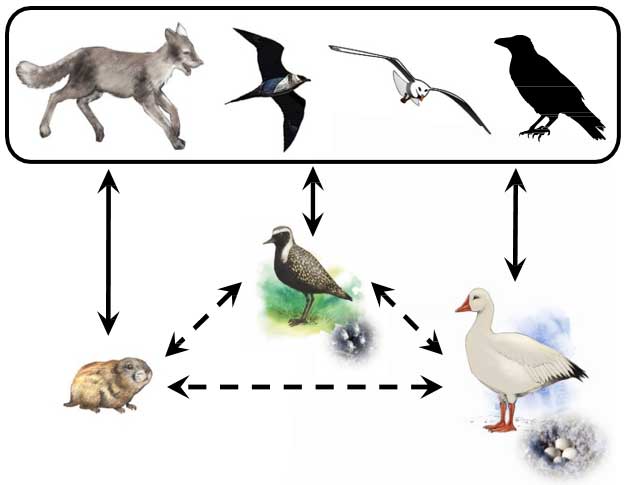
|
| Indirect interactions between lemmings, geese and shorebirds (from Lamarre et al. 2017, DOI 10.1002/ecs2.1788) |
The full dataset of our shorebird nesting monitoring on Bylot Island is available on NordicanaD.
| Lapland longspur | Terrestrial arthropods |
